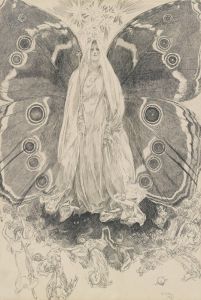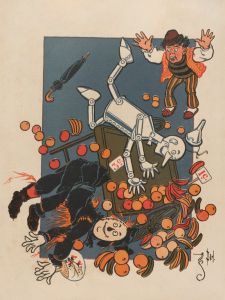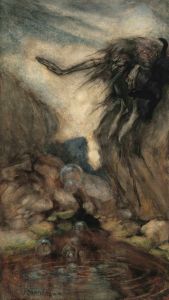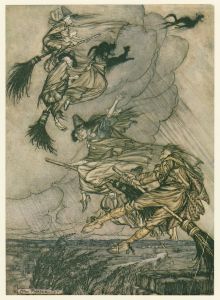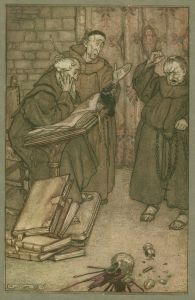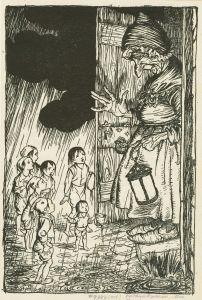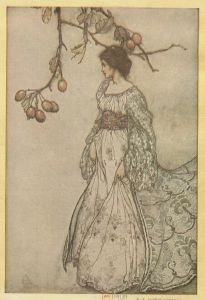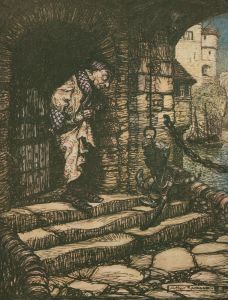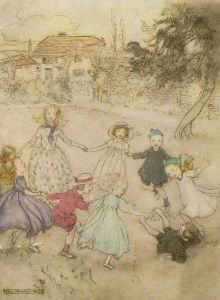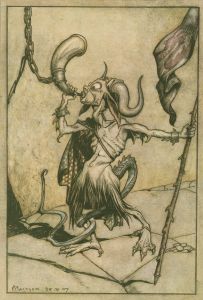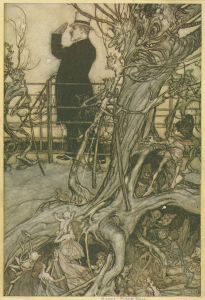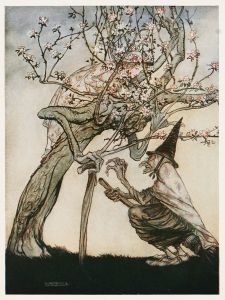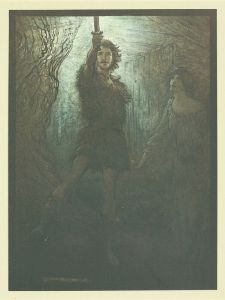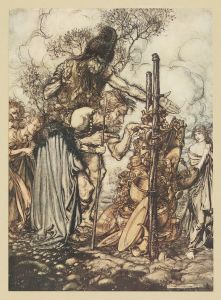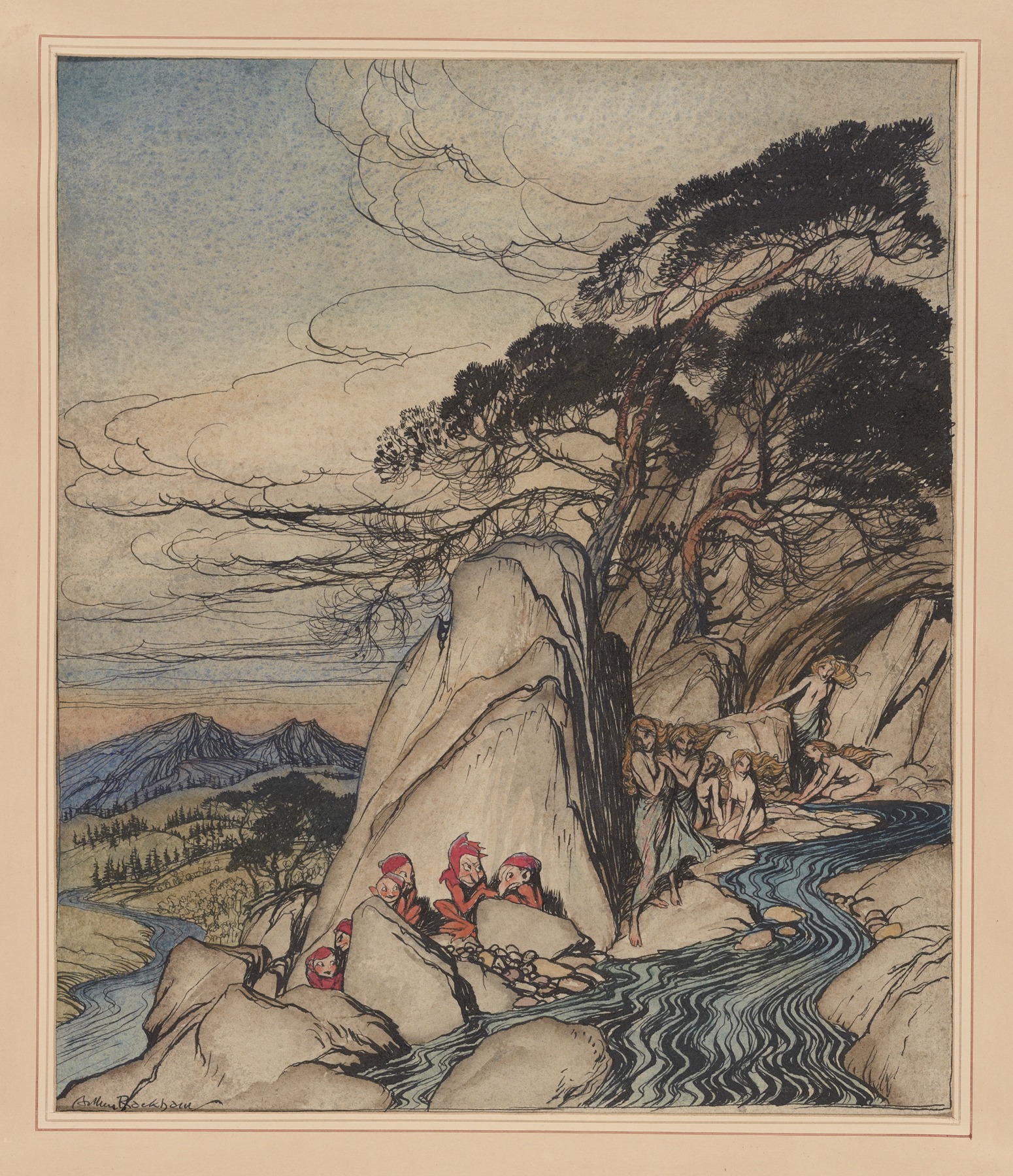
Rip van Winkle. These fairy mountains
A hand-painted replica of Arthur Rackham’s masterpiece Rip van Winkle. These fairy mountains, meticulously crafted by professional artists to capture the true essence of the original. Each piece is created with museum-quality canvas and rare mineral pigments, carefully painted by experienced artists with delicate brushstrokes and rich, layered colors to perfectly recreate the texture of the original artwork. Unlike machine-printed reproductions, this hand-painted version brings the painting to life, infused with the artist’s emotions and skill in every stroke. Whether for personal collection or home decoration, it instantly elevates the artistic atmosphere of any space.
Arthur Rackham was a prominent English book illustrator known for his distinctive style, which combined haunting, dreamlike qualities with intricate detail. One of his notable works is the illustration titled "Rip van Winkle. These fairy mountains," which is part of his illustrations for Washington Irving's short story "Rip Van Winkle." This story, first published in 1819, is a classic American tale about a man who falls asleep in the Catskill Mountains and wakes up 20 years later to find a changed world.
Rackham's illustration was created for the 1905 edition of "Rip Van Winkle," which is considered one of his most significant works. This edition was published by William Heinemann in London and Doubleday Page & Co. in New York. Rackham's illustrations for this book helped cement his reputation as one of the leading illustrators of the early 20th century.
In "Rip van Winkle. These fairy mountains," Rackham captures the mystical and eerie atmosphere of the Catskill Mountains, which play a crucial role in Irving's story. The illustration depicts the moment when Rip encounters the mysterious, ghostly figures of Henry Hudson and his crew, who are playing ninepins in the mountains. This scene is pivotal as it leads to Rip's long slumber.
Rackham's use of muted colors and fine lines creates a sense of otherworldliness and enchantment. His attention to detail is evident in the depiction of the gnarled trees, the misty landscape, and the ethereal figures, all of which contribute to the magical and slightly ominous mood of the illustration. Rackham's ability to convey emotion and atmosphere through his art is one of the reasons his work has endured over the years.
The 1905 edition of "Rip Van Winkle" was a commercial success and received critical acclaim for Rackham's illustrations. It was part of a broader trend during the late 19th and early 20th centuries when illustrated books became highly popular, and illustrators like Rackham gained significant recognition. His work on "Rip Van Winkle" is often cited as a prime example of his talent for bringing literary characters and settings to life through his unique artistic vision.
Arthur Rackham's illustrations have had a lasting impact on the field of book illustration, influencing many artists who followed. His ability to blend fantasy with reality and his meticulous attention to detail have made his works timeless. "Rip van Winkle. These fairy mountains" remains a testament to Rackham's skill and imagination, capturing the essence of Washington Irving's story while adding his own artistic interpretation.
Today, Rackham's illustrations are highly sought after by collectors and continue to be appreciated by audiences worldwide. His work on "Rip Van Winkle" is considered a classic example of early 20th-century book illustration, showcasing his ability to create a visual narrative that complements and enhances the written word.





